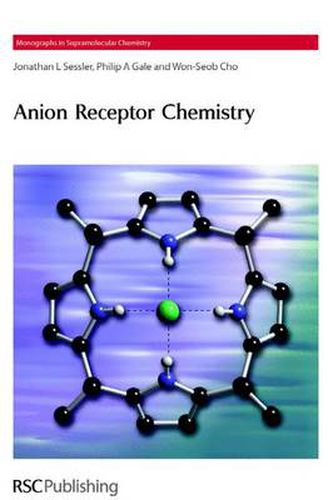Readings Newsletter
Become a Readings Member to make your shopping experience even easier.
Sign in or sign up for free!
You’re not far away from qualifying for FREE standard shipping within Australia
You’ve qualified for FREE standard shipping within Australia
The cart is loading…






Anion recognition plays a critical role in a range of biological processes, and a variety of receptors and carriers can be found throughout the natural world. Chemists working in the area of supramolecular chemistry have created a range of anion receptors, drawing inspiration from nature as well as their own inventive processes. This book traces the origins of anion recognition chemistry as a unique sub-field in supramolecular chemistry while illustrating the basic approaches currently being used to effect receptor design. The combination of biological overview and summary of current synthetic approaches provides a coverage that is both comprehensive and comprehensible. First, the authors detail the key design motifs that have been used to generate synthetic receptors and which are likely to provide the basis for further developments. They also highlight briefly some of the features that are present in naturally occurring anion recognition and transport systems and summarise the applications of anion recognition chemistry. Providing as it does a detailed review for practitioners in the field and a concise introduction to the topic for newcomers, Anion Receptor Chemistry reflects the current state of the art. Fully referenced and illustrated in colour, it is a welcome addition to the literature.
$9.00 standard shipping within Australia
FREE standard shipping within Australia for orders over $100.00
Express & International shipping calculated at checkout
Anion recognition plays a critical role in a range of biological processes, and a variety of receptors and carriers can be found throughout the natural world. Chemists working in the area of supramolecular chemistry have created a range of anion receptors, drawing inspiration from nature as well as their own inventive processes. This book traces the origins of anion recognition chemistry as a unique sub-field in supramolecular chemistry while illustrating the basic approaches currently being used to effect receptor design. The combination of biological overview and summary of current synthetic approaches provides a coverage that is both comprehensive and comprehensible. First, the authors detail the key design motifs that have been used to generate synthetic receptors and which are likely to provide the basis for further developments. They also highlight briefly some of the features that are present in naturally occurring anion recognition and transport systems and summarise the applications of anion recognition chemistry. Providing as it does a detailed review for practitioners in the field and a concise introduction to the topic for newcomers, Anion Receptor Chemistry reflects the current state of the art. Fully referenced and illustrated in colour, it is a welcome addition to the literature.